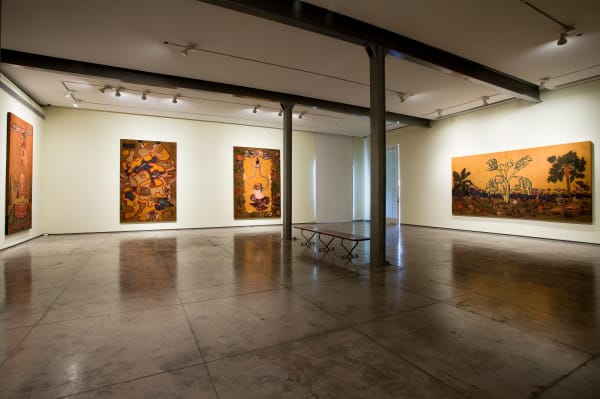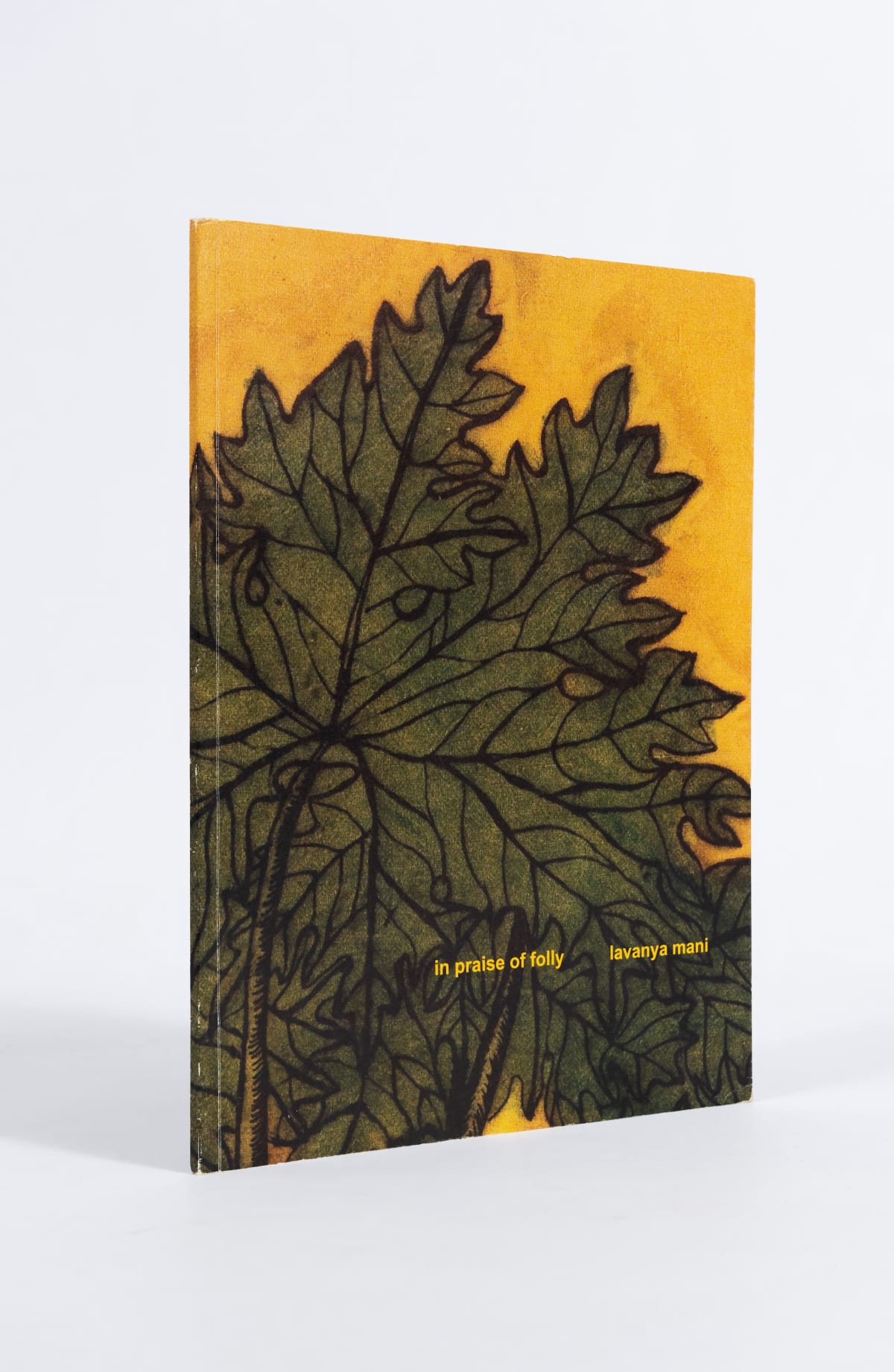In Praise of Folly: Lavanya Mani
Lavanya Mani’s body of work explores a range of perspectives on history, society, trade and craft. Using kalamkari, a centuries-old technique for dyeing and drawing on fabric, Lavanya has created a context in which to survey the fascination that Indian textiles and their makers provoke. Her works are virtuoso demonstrations of competence in a difficult art, one usually undertaken by men, and convey a refreshing celebration of pride in craftswomanship. These softly-coloured works are sensuous, filled with traces of the artist’s hand, processes of production and the scents of milk and dye. Because kalamkari is a process-driven, handmade art, Lavanya’s sense of accomplishment is always mitigated by the possibility of accident. In this sense, she is not content to practice kalamkari traditionally, but covets the look of the accident, not of technique, but of meaning; through the use of collage, readymade appliqué, Clip art, Victorian epigrams and cannibalized bits from her own, earlier work, Lavanya shifts what circulates as vernacular and popular culture into the realm of the gallery. Her works offer the possibility of meaning on multiple registers and have an emotional range that encompasses both sadness and play.
The images of a “wool plant”, an origami boat, an anthropomorphized sewing machine proudly unveiled on a vaudevillian stage or disembodied white women’s hands busily producing a labyrinth seem to comment on another age – they appear as a record of “signs taken for wonders”. But on longer perusal, the works strike a more ambiguous note. From being an examination of the foreigner who finds the Indian exotic or the native who is fascinated with the European, Lavanya’s work then becomes a site for reflecting on our contemporary. In a roundabout way, her textiles highlight the current, seemingly insatiable, desire for domesticating colonial heritage as well as our collective narcissistic drive to recover and consume native tradition, through biographical and other narratives and in the form of craft, even as we rush headlong into a brave, new world.
-Annapurna Garimella






